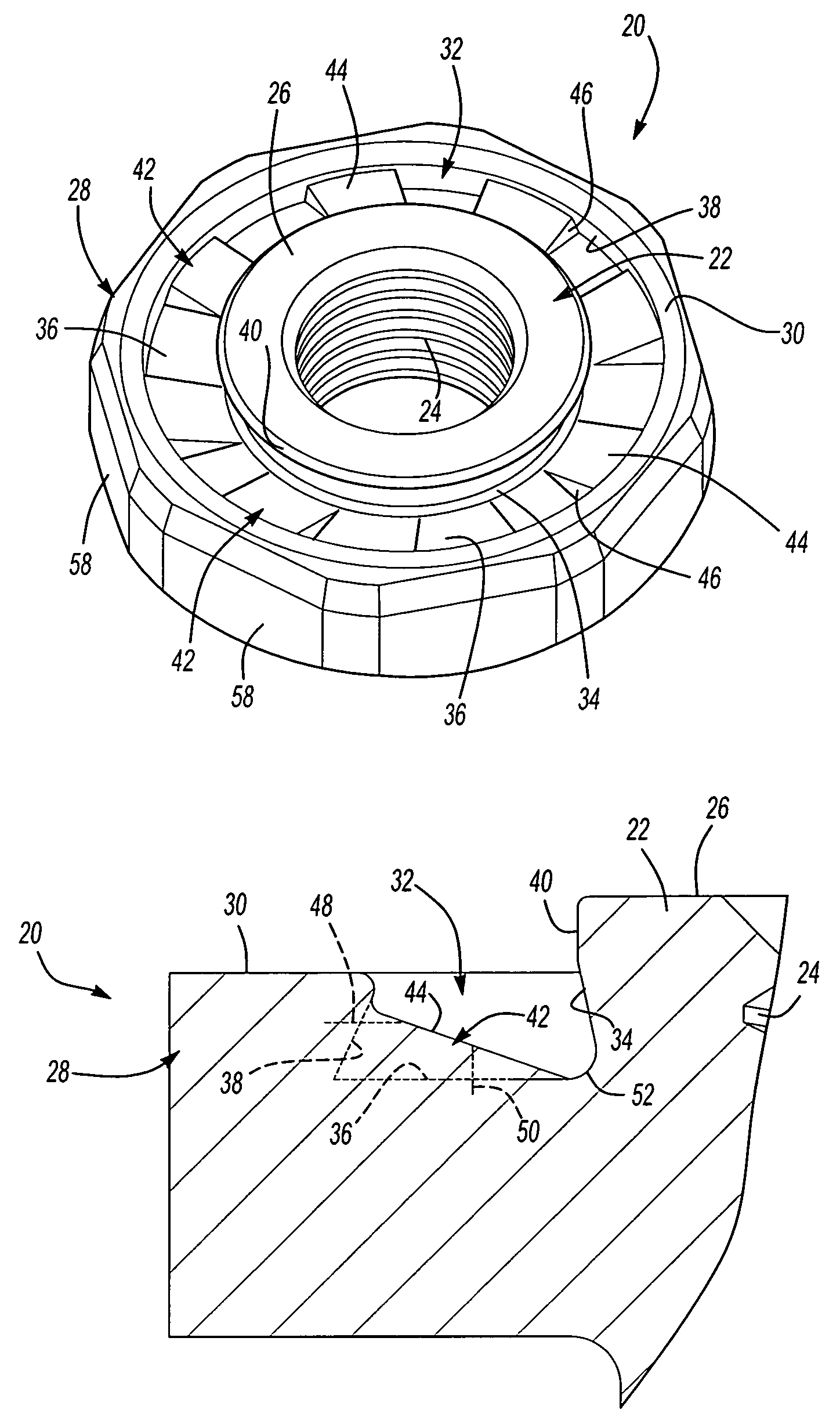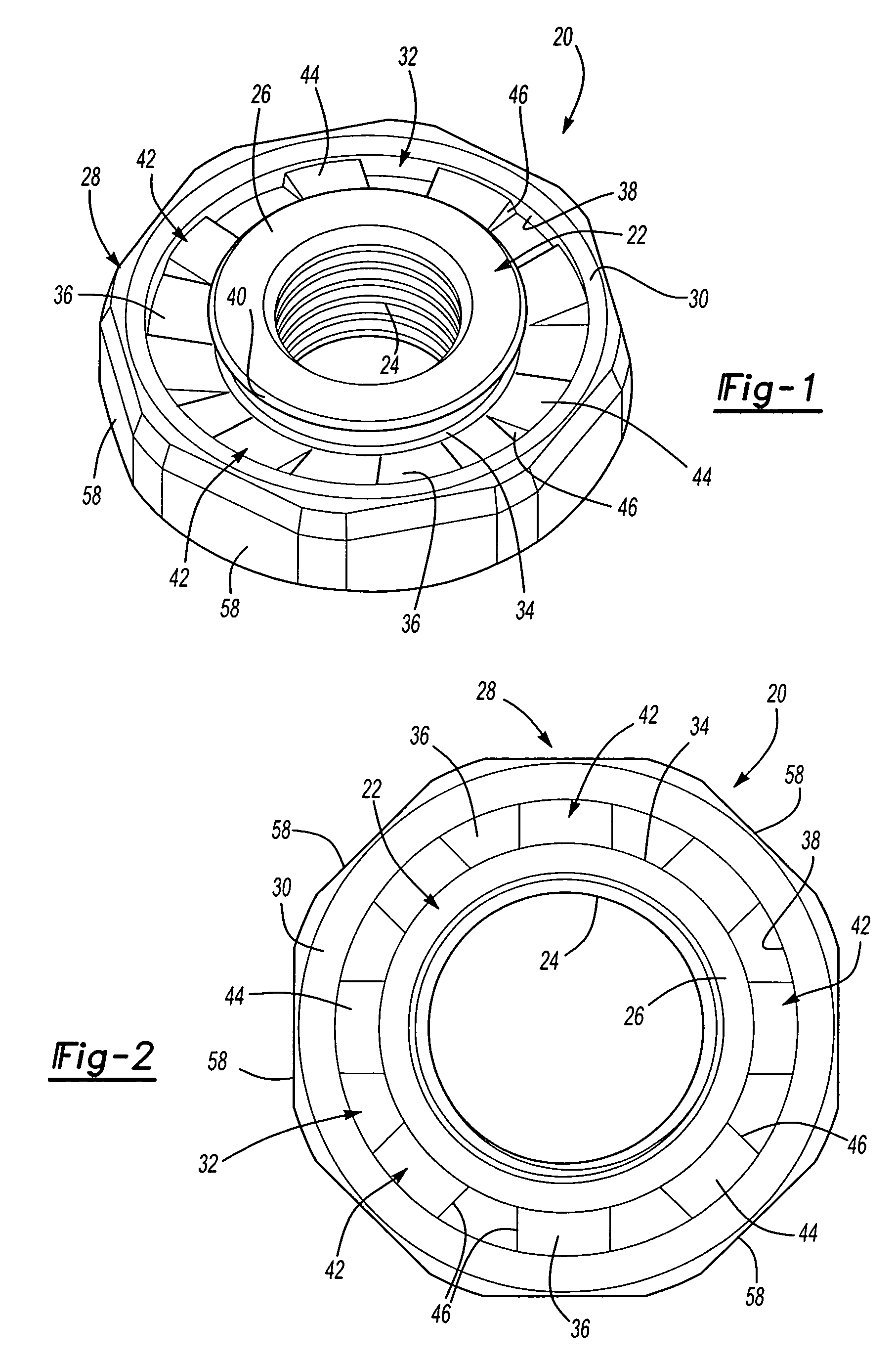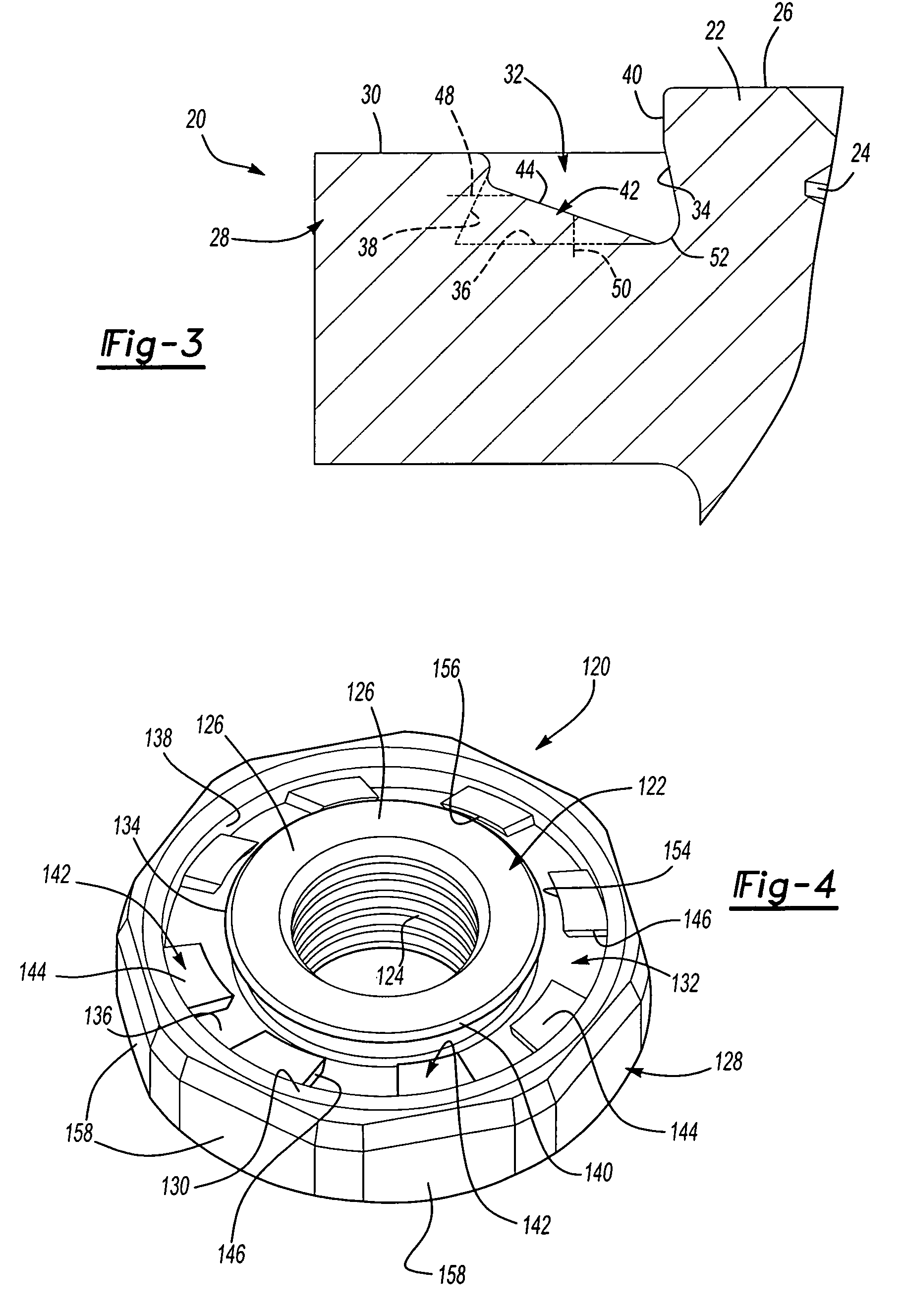Self-attaching nut
a self-attaching and nut technology, applied in the direction of threaded fasteners, screwed fasteners, manufacturing tools, etc., can solve the problems of unthreaded bores, achieve optimum torque resistance, improve the push-off strength of fasteners and panel assemblies, and improve the retention of self-attaching nuts
- Summary
- Abstract
- Description
- Claims
- Application Information
AI Technical Summary
Benefits of technology
Problems solved by technology
Method used
Image
Examples
Embodiment Construction
[0017]This application discloses two alternative embodiments of a self-attaching female fastener or nut of this invention. However, as will be understood by those skilled in this art, the disclosed embodiments are illustrative only and do not limit further embodiments based upon this disclosure, except as set forth in the appended claims. FIGS. 1 to 3 illustrate one preferred embodiment of a self-attaching female fastener or nut 20 which, as described above, may be formed by conventional cold forming or cold heading techniques, possibly including supplemental or secondary operations. The self-attaching nut 20 may be utilized as either a pierce nut or a clinch nut as described above. The disclosed embodiment of the self-attaching nut 20 includes a central pilot portion 22, a bore 24 extending through the pilot portion and an annular end face 26 surrounding the bore 24. The bore 24 may be threaded as shown or unthreaded for receipt of a self-tapping or thread rolling male fastener. Th...
PUM
 Login to View More
Login to View More Abstract
Description
Claims
Application Information
 Login to View More
Login to View More - R&D
- Intellectual Property
- Life Sciences
- Materials
- Tech Scout
- Unparalleled Data Quality
- Higher Quality Content
- 60% Fewer Hallucinations
Browse by: Latest US Patents, China's latest patents, Technical Efficacy Thesaurus, Application Domain, Technology Topic, Popular Technical Reports.
© 2025 PatSnap. All rights reserved.Legal|Privacy policy|Modern Slavery Act Transparency Statement|Sitemap|About US| Contact US: help@patsnap.com



